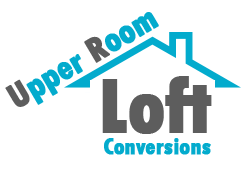Loft conversions are possibly the most practical and cost effective way of enlarging the home, however it may not be the answer for everyone wanting to extend their house. We at Upper Room Lofts have listed some of the pros and cons of the loft conversion. Some aspects will not be applicable to everyone and every home and this is not an extensive list – but simply a quick run through to help you decide on what a loft conversion could mean to your home and if it will benefit your needs and wants.
Pros
- A loft conversion will utilise and make use of space that may not be used at all or merely for storage purposes. You may ask yourself “What will happen to all the items you have stored?”
Well, most loft conversions will have storage around the edges – and, to be honest if you are in need of more living space then what is kept in the loft could very well do with a sort and clear out!
- Loft conversions are often more affordable per a square meter basis than a conventional extensions as part of the structure is already in place.
- It avoids losing outside space, especially in properties with limited outdoor space and in particular flats that obviously have no garden space.
- It can be useful when there are potential problems when building at ground level. i.e. difficult soil conditions, trees, sewers, etc.
- In narrow properties a loft conversion can avoid enclosing existing windows and/ or creating long corridors which are more likely with the addition of a conventional home extension.
- Most commonly when a homeowner wants to extend their home it will be for the addition of a further bedroom. A loft conversion lends itself perfectly to this need as it is already ideally located on an upper floor. To achieve the same goal, a conventional home extension will need to be on several storeys – more work, more expense.
- A loft conversion requires less dependency on weather conditions, unless there is major work done to the roof. i.e When building a dormer, but even in this instance it doesn’t often take long to create a weatherproof shell.
- Most loft conversions are actually exempt from Town Planning and legislation is probably a lot easier to understand in comparison to that applying to other extensions.
Cons
- Some properties do not lend themselves well to loft conversions, especially modern low pitched truss roof buildings.
- It can change the property type. i.e. When converting a bungalow it will effectively become a house due to split levels, however most people looking to purchase a bungalow specifically want all accommodation on one floor.
- Creating room for stairs may lead to losing an existing room or part of it.
- A poorly designed loft conversion can have a very undesirable effect on the overall appearance of the building.
- Even though room sizes of a loft conversion can seem reasonable, most lofts have sloping ceilings. Anything below 2 meters high is not suitable for walking in, and anything under 1 meter is not even really suitable for low furniture such as drawers.
Contact us to learn more about the type of loft conversion services we offer and could be the best fit for you.

